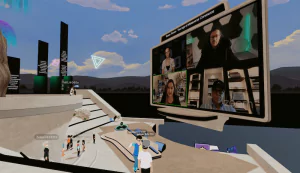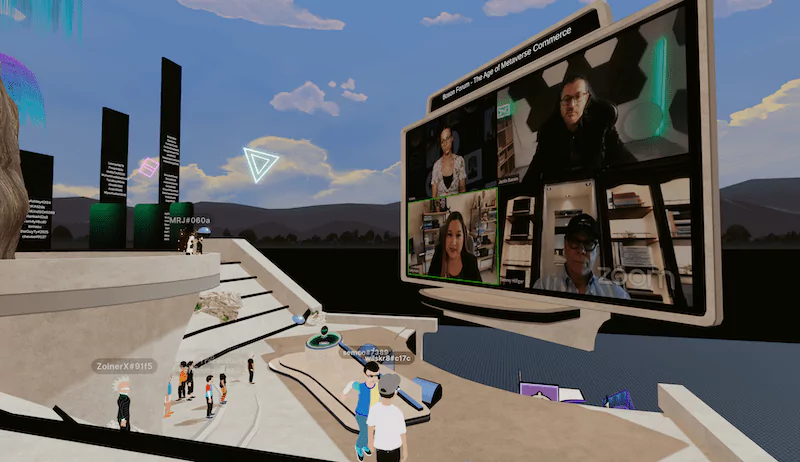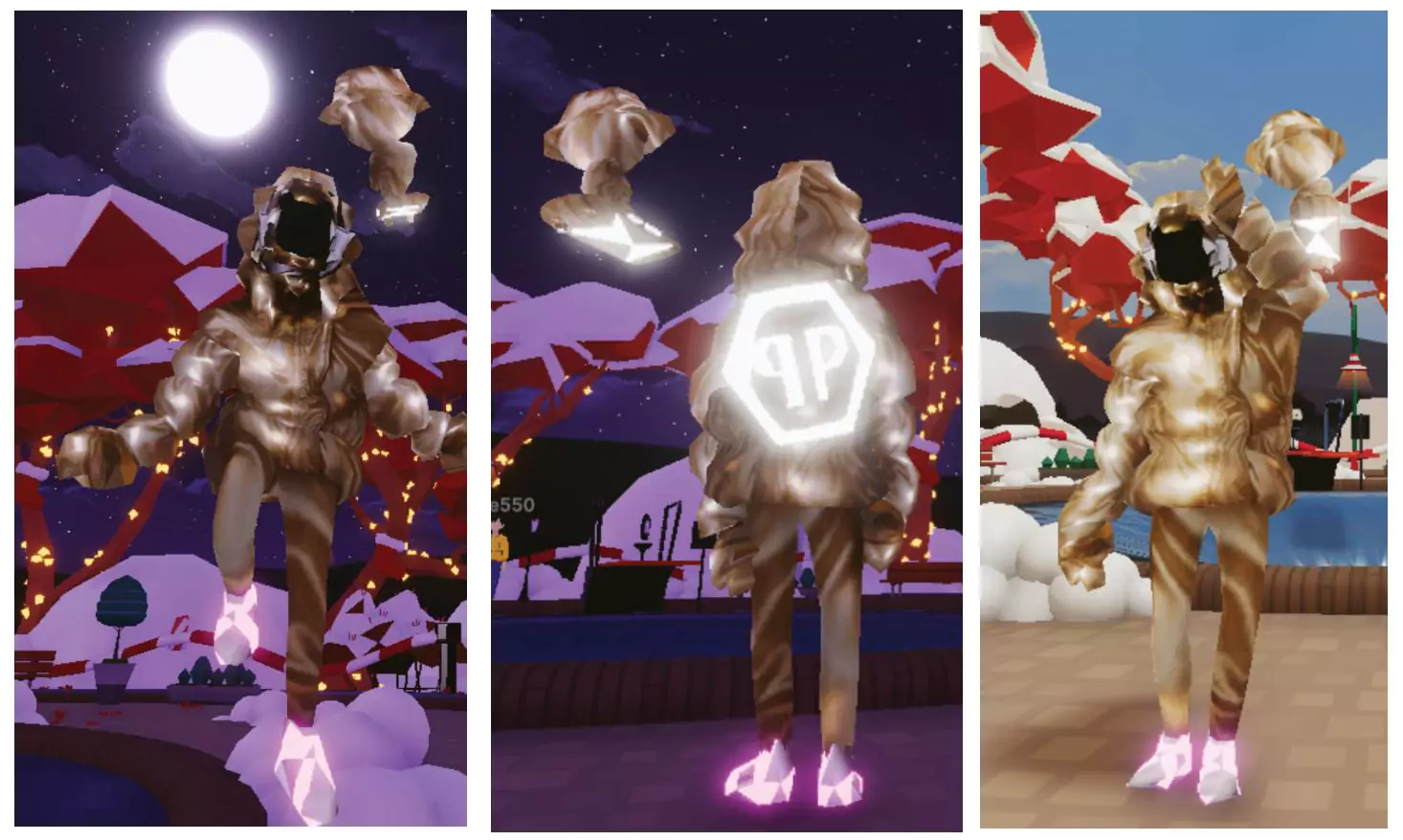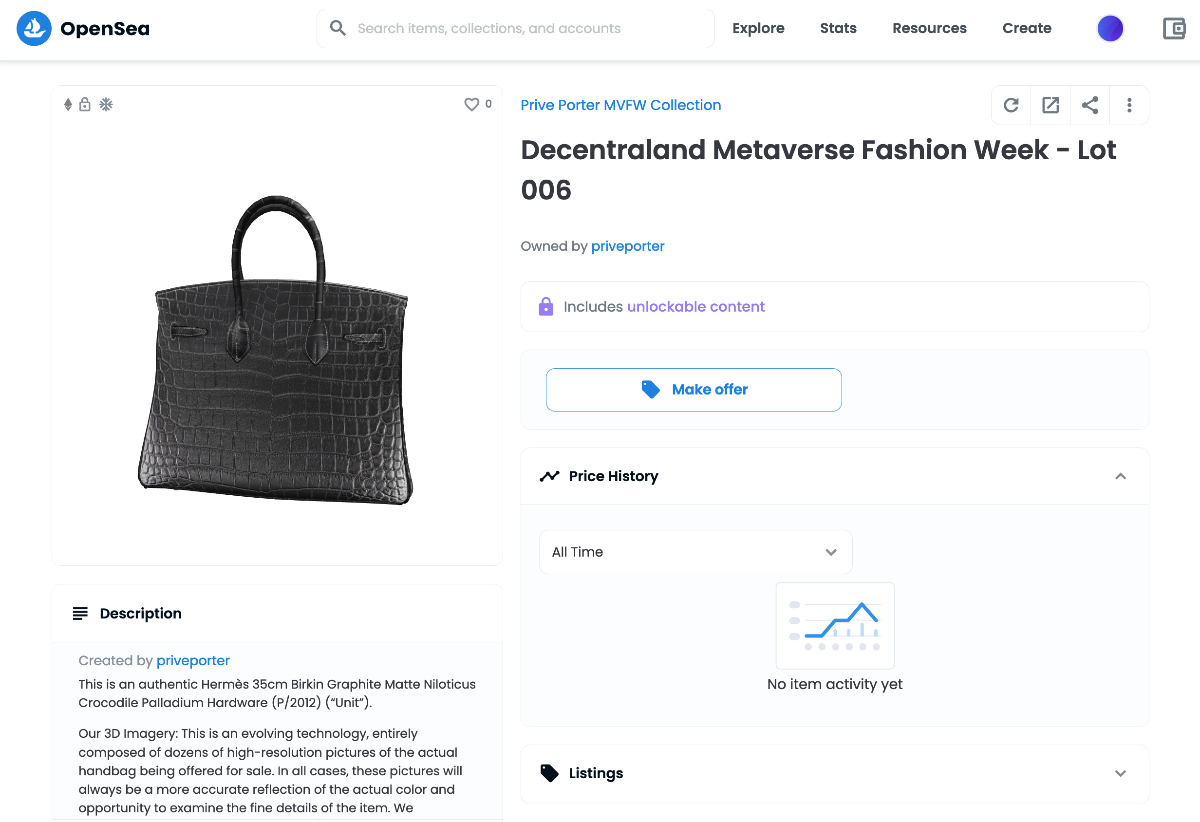Subscribe to our Telegram channel

NFT adoption: more than 70 brands and fashion designers took to the runway in the meta-universe
Metaverse may be another new concept, but the real-world impact that virtual game worlds can have on the trillion-dollar retail industry was recently demonstrated at Metaverse Fashion Week (MVFW). This fully virtual event took place from March 24−27, 2022, at Decentraland, a decentralized virtual social platform on the Ethereum blockchain. More than 70 brands, artists, and designers took part in the online event, including such celebrities as Tommy Hilfiger, Estée Lauder, Philipp Plein, Selfridges, and Dolce & Gabbana.
MVFW gave a glimpse of what the future of fashion might look like as brands and designers showcased non-fungible tokens (NFTs) on genderless avatars walking down futuristic runways. Although this concept may seem completely unrealistic (especially to those who are advocates of traditional values), the mix of digital and real worlds is the idea behind the event. Famous fashion designers have praised MVFW as one of the most exciting and adventurous ways for brands to further engage with consumers.

Discussion with Tommy Hilfiger during MVFW
Tommy Hilfiger himself, who recently turned 71, is 100% on board and is convinced that Metaverse is the future of fashion: «It's part of our DNA to embrace what’s next, and I really believe that Metaverse is the future of the industry, leading us to more creativity, more experiences, and more opportunities to grow the fan community around the world.»
German fashion designer Philipp Plein also participated in MVFW, presenting his latest NFT collection at the recently acquired $ 1.4 million Plein Plaza, a plot of land with an area of over 16,000 square meters in the Decentraland metaverse.

Avatar from the Philipp Plein collection
Justin Bannon, the creator of Boson Protocol, shared his vision of what the near future of fashion brands might look like: «In the future, Tommy Hilfiger’s flagship store may have a digital jacket display that cannot be bought in the store. To buy this item, consumers will have to scan a QR code, which will then take them to a Decentraland-type metaverse where they will need to play a game or quest to earn NFTs. This NFT will potentially unlock three components: digital clothing for use in the Metaverse, a physical bonus that will be given out in a real store, and, for example, an experimental NFT that will give consumers access to a fashion show or an interesting event in the future (something like VIP access).»
Jeffrey Burke, co-founder of Privé Porter, presented 4 NFT tokens of luxury handbags with a total value of more than $ 500,000.
If a consumer wants to buy a bag, he or she will be asked to confirm the transaction on the blockchain, as a result of which Boson protocol smart contracts take over the payment and issue an NFT that can be exchanged for physical goods (or sold, exchanged). Similar projects have been launched by other brands, such as Jacob & Co., a manufacturer of jubilee and wristwatches.
MVFW gave an insight into the future of retail in metaworlds, but will it catch on?
While all of the above may resonate with young people, the technical aspects associated with Metaverse may be too complicated for some. For example, some users experienced technical difficulties during MVFW, noting that computers could not handle the graphical demands of Decentraland.
Anyone else experiencing technical issues trying to participate in @decentraland #MetaverseFashionWeek?
— Rachel Wolfson (@Rachelwolf00) March 24, 2022
Moreover, the graphics in Decentraland also need to be improved, especially when the hype gains momentum among more brands. A representative of one of the NFT marketplaces sees the main problem as the limitation due to the low resolution of textures. «We had to put it on the blockchain, so the output is ultra-low resolution, which is a huge limitation for brands. But today, this is a problem for every meta-universe ecosystem and it will be solved.»
Although it is difficult to predict the future, it is worth mentioning the words of representatives of the crypto investment giant Grayscale that the potential of metaverse is a trillion dollars from advertising, e-commerce, digital events, and monetization of developers/creators. Bankers also agree with this — Deutsche Bank also believes that the NFT market is about to explode.
Has the world finally gone crazy or is this the wonderful future we have been waiting for?


